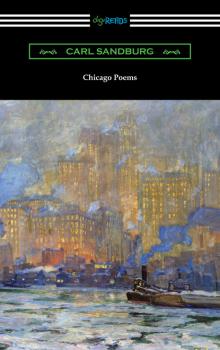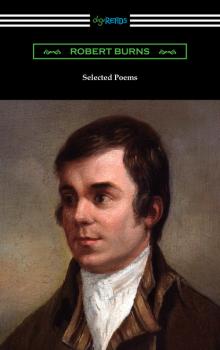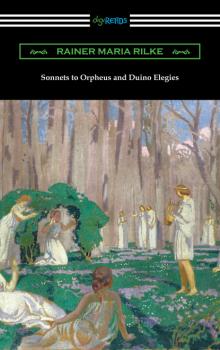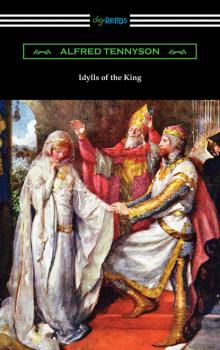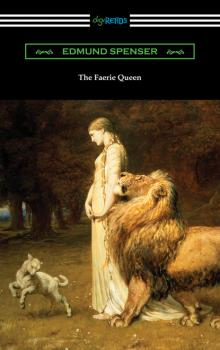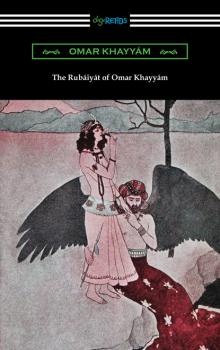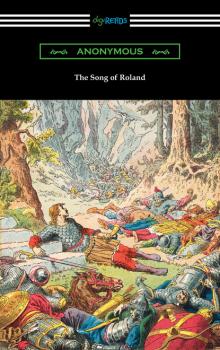ТОП просматриваемых книг сайта:
Зарубежные стихи
Различные книги в жанре Зарубежные стихи, доступные для чтения и скачиванияАннотация
In this representative collection of Christina Rossetti’s poems we find a vast array of narrative tales, love lyrics, sonnets, hymns, ballads, and sprightly verses for children. Ranked among the finest English poets of the nineteenth century, Christina Rossetti is a widely read, though not widely imitated poet, recognized for her devotional poetry, influenced by the religious conservatism and asceticism of the Church of England. This collection of poems includes her most renowned work, “Goblin Market”, a narrative poem which tells the tale of two sisters, Laura and Lizzie, who are tempted by river goblins. Also included in this collection is “The Prince’s Progress”, a tragic tale of loss concerning a princess awaiting the return of her prince. Rossetti’s poetry is remarkable for its clarity and simplicity of diction in dealing with themes of truth, beauty, love, death, heavenly joys, earthly pleasures, and purity of faith. All together seventy-one poems are contained herein “The Goblin Market and Other Poems”, a collection of endearing works of inward contemplation and timeless vision which will inspire and delight readers of all ages.
Аннотация
“Chicago Poems” is an early collection of poems by American writer, poet, and three-time Pulitzer Prize winner Carl Sandburg. Published in 1916 and his first by a mainstream publisher, this collection was a critical success and began Sandburg’s career as a notable writer. Sandburg was a champion of an American form of social realism that celebrated American people, industry, and agriculture. He expressed this sentiment in an easy-to-read and plain-speaking free verse, a style that is often compared to Walt Whitman. Sandburg began working on the “Chicago Poems” in 1912, after moving to the city from Milwaukee with his wife and their young children. He embraced the gritty realism of the city, its important and central location to American commerce, and the hardworking people who kept the industrial machine running. Lyrical, soulful, compassionate, and intimately human, Sandburg earned his reputation as the “poet of the people” with his loving treatment of the common man and his struggles. Among the dozens of poems in this honest and touching collection are many of his most famous, such as “Chicago”, “Fog”, “Who Am I?”, and “Under the Harvest Moon”. This collection by one of America’s most gifted poets is a moving meditation on love, loss, war, immigration, loneliness, and the beauty of the natural world.
Аннотация
Scotsman and poet Robert Burns was born in 1796. His family didn’t have much in terms of money, but Burns was still optimistic about life and love. His first poems were songs written to his many lovers, though those were not received well by the mistresses. In 1786, Burns’ first anthology “Poems, Chiefly in the Scottish Dialect” was released. It contained some of his best works, such as “The Twa Dogs” and “To a Mouse, On Turning Up Her Nest With The Plow”. Burns then moved around Scotland and even took up a short residence in Jamaica as a bookkeeper on a plantation. After returning to his native land, Burns settled down in Dumfries and devoted himself to his poems and lyrics. In this phase of his life, Burns became highly invested in collecting and preserving many of the local Scottish hymns and tunes. However, he was also famous for taking his own words and singing them with the melody of traditional Scottish songs. This is the case for “Auld Lang Syne” and “A Red, Red Rose.” His poetry and lyrics are still famous to this day, in large part due to his ability to weave seamlessly between emotions. A staunch supporter of republicanism, Burns was a Scottish patriot and believed in equality of all races, classes, and genders. In 2009, he was voted as the most influential and beloved Scot of all time by the people of Scotland. In this volume of “Selected Poems” you will find a representative selection of his poetry that illustrates why he is widely regarded as Scotland’s greatest poet. This edition includes a biographical afterword.
Аннотация
A visionary of eighteen-century English society, William Blake produced a vast collection of poetry, mythology, satires, political pieces, and prophetic works, in addition to his famous etchings and engravings. Although largely unknown during his own lifetime and often rejected as a madman for claims of hearing voices and later having visions, Blake has achieved enduring fame for his innovative and extraordinarily imaginative work and is widely viewed as one of the most important of all English artists. Born in London in 1757, Blake received little formal schooling and began his apprenticeship as an engraver in 1772 and later studied painting at the Royal Academy of Arts in London. The poetry he wrote throughout his life varies greatly in style and substance, reflecting his literary development and the radical shifts in his religious belief. This complete collection of Blake’s poetry includes his famous “Songs of Innocence and Songs of Experience”, which exemplify the author’s fondness for thematic dichotomies in poems like “The Lamb” and “The Tyger”. Also included are “The Four Zoas”, “Milton”, and “Jerusalem”, all of which display an extensive use of symbolism from Christianity and Blake’s theories on reality and knowledge. This collection is an important addition to the library of any scholar, student, or poetry enthusiast.
Аннотация
The cycle of 55 sonnets that comprise Rainer Maria Rilke’s “Sonnets to Orpheus” were written in a period of three weeks during 1922, a time which the poet himself described as a “savage creative storm.” Inspired by the death of his daughter’s friend, Wera Knoop, Rilke commenced to the production of “Sonnets to Orpheus”, a work filled with mythological and biblical allusions. During the same burst of creative energy he set to working on the completion of the “Duino Elegies”, a work begun some ten years earlier but set aside due to Rilke’s own emotional distress over the tragic events of World War I and his conscription into the Austro-Hungarian army. He wrote in a letter to the deceased girl’s mother that Wera’s ghost was “commanding and impelling” him to write. The results of this “savage creative storm” are generally considered as Rilke’s masterpieces. “Duino Elegies” is an intensely spiritual group of verses that ponders the beauty and existential suffering of life. Together these works exhibit why Rilke is widely recognized as one of the most lyrically intense of all German-language poets.
Аннотация
A cycle of twelve narrative poems, “Idylls of the King” is Alfred Tennyson’s classic 19th century retelling of Arthurian legend. Linked by their common focus, these poems relate the stories of King Arthur’s ascent to power, quest to create a perfect kingdom, and his eventual defeat. Included in this epic work are the stories of Arthur’s love for Guinevere, their marriage, and her betrayal. Much of the work is also devoted to the exploits of the knights of the round table as well as the involvement of the wizard Merlin. Tennyson relied heavily on previous Arthurian works including Sir Thomas Malory’s “Le Morte d’Arthur”, which was first published in 1485, and the “Mabinogion”, one of the earliest prose stories of Britain, one based on older oral traditions, written during the 12th century. However, “Idylls of the King” is not merely a retelling of the same stories of these previous works, but rather an expansion of the legend and an effort to bring the concerns and values of Victorian England to these timeless tales. Tennyson’s poems are a complex, beautiful, and thoughtful addition to the genre of Arthurian literature. This edition includes a biographical afterword.
Аннотация
Considered to be one of the most difficult poems in the history of the English language, “The Faerie Queen” by Edmund Spenser is a marvelous epic poem depicting the virtues of the legendary King Arthur and his knights in a mythical place called Faerieland. Spenser based his interpretation of the virtues on those named by Aristotle and Thomas Aquinas. Each one of the books discusses a different hero who displays one of these virtues; however, this entire collection was meant to be a tribute to Queen Elizabeth and the Tudor family. The stories are intricate and sometimes hard to understand. The language follows Spenserian prose and is intentionally archaic; Spenser wanted his work to have a mythical feel rather than being a modern piece. Each work was specifically chosen to evoke a certain feeling or image, allowing Spenser to make the world of Faerieland have an enchanting feeling. All readers who make their way through the text find that they are rewarded by the epic poem’s masterful plots and inventive setting. Students of history and literature will enjoy this timeless classic for its challenging rhetoric, but also for its vivid depictions and stunning allegorical significance. This edition is thoroughly annotated by David Laing Purves.
Аннотация
First published in 1923, “New Hampshire” by famed American poet Robert Frost, is one of the most beautiful and famous collection of poems in American literature. The book contains many of Frost’s most well-known and beloved poems, such as “Stopping by Woods on a Snowy Evening”, “Nothing Gold Can Stay”, “Fire and Ice”, and “The Need of Being Versed in Country Things”. Frost won the first of his four Pulitzer Prizes for “New Hampshire” and he would go on to be awarded the Congressional Gold Medal in 1960 for his poetry and was named the poet laureate of Vermont in 1961. Frost’s immortal poems have become an essential part of the fabric of American culture and continue to inspire modern poets, authors, film makers, and artists. Some of literature’s most famous and often quoted lines may be found in this collection by a true master of verse. Frost taught English for many years and encouraged his students to capture the various inflections, tones, and cadences of the spoken English language in his writing, an approach he perfected in his own work and referred to as “the sound of sense”. This timeless collection belongs in the library of everyone who appreciates American literature and poetry. This edition includes the woodcut illustrations by J. J. Lankes which appeared in the first edition.
Аннотация
First published in English by Edward Fitzgerald in 1859 from its original Farsi, “The Rubaiyat of Omar Khayyam” is a collection of quatrains attributed to Omar Khayyam, a Persian astronomer and mathematician born in the later part of the 11th century. Omar Khayyam’s poetry, which received very little international notoriety in its own day, achieved classic status when it was discovered and rendered into English verse by Edward Fitzgerald over seven hundred years later. Omar Khayyam was famous in his time for his important contributions to geometry and the creation of a highly accurate solar calendar, yet it is the beautiful and captivating verses of his poetry that have withstood the test of time and continue to inspire readers and writers to this day. Omar Khayyam celebrated life in all its humor, pleasure, and beauty, while also capturing its frailty and impermanence. Romantic, clever, funny, passionate and bittersweet, this collection is a must-read for all who love language and poetry. Presented here are the beloved and traditionally collected first and fifth editions with the original notes and introduction by Edward Fitzgerald.
Аннотация
In the year 778 A.D., Charles the Great, King of the Franks, returned from a military expedition into Spain, whither he had been led by opportunities offered through dissensions among the Saracens who then dominated that country. On the 15th of August, while his army was marching through the passes of the Pyrenees, his rear-guard was attacked and annihilated by the Basque inhabitants of the mountains, in the valley of Roncesvaux. About this disaster many popular songs, it is supposed, soon sprang up; and the chief hero whom they celebrated was Hrodland, or Roland, Count of the Marches of Brittany. By the latter part of the eleventh century, when the form of «The Song of Roland» which we now possess was probably composed, the historical germ of the story had almost disappeared under the mass of legendary accretion. Charlemagne, who was a man of thirty-six at the time of the actual Roncesvaux incident, has become in the poem an old man with a flowing white beard, credited with endless conquests; the Basques have disappeared, and the Saracens have taken their place; the defeat is accounted for by the invention of the treachery of Ganelon; the expedition of 777-778 has become a campaign of seven years; Roland is made the nephew of Charlemagne, leader of the twelve peers, and is provided with a faithful friend Oliver, and betrothed, Alda. Simple almost of bareness in style, without subtlety or high imagination, «The Song of Roland» is yet not without grandeur; and its patriotic ardor gives it a place as the earliest of the truly national poems of the modern world. This edition follows the translation of John O’Hagan.


